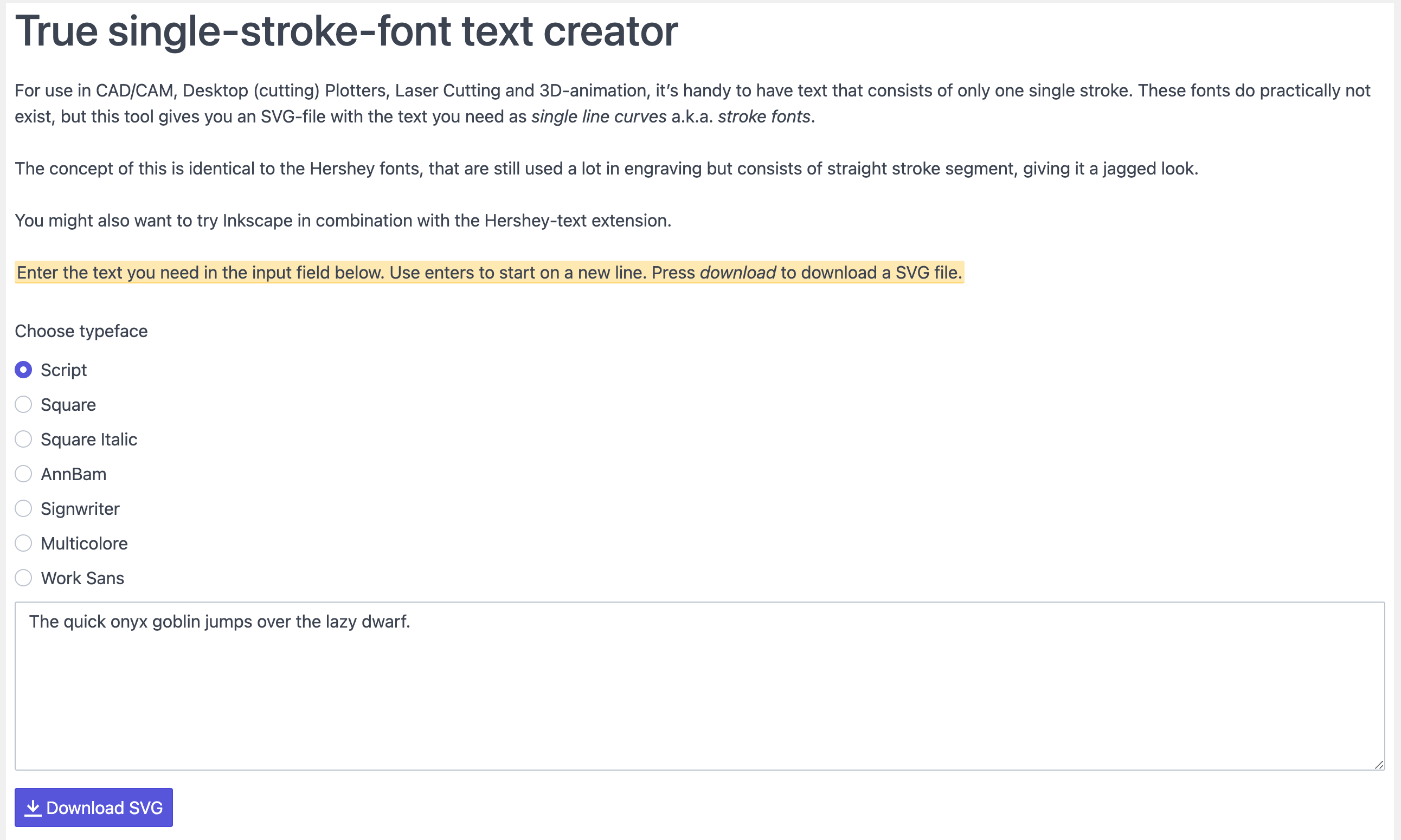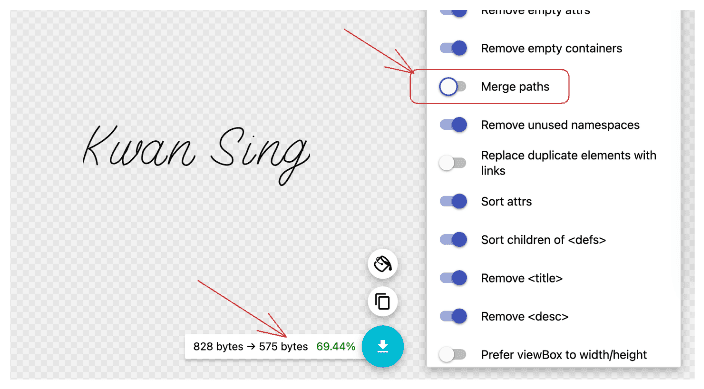< Back to home

30 Mar 2023
Creating animated SVG word.
5 mins read.
One of the simplest and fastest way to create fancy animated SVG words.
1.Use a text svg creator https://www.templatemaker.nl/singlelinetext/ and it has to be single-stroke-font for this animation to work. Then download the svg file.

2. Upload the downloaded svg file to https://jakearchibald.github.io/svgomg/ to remove the unnecessary svg pathing. Untick merge path in svgomg, to split the pathing for each character.

3.Download and import the SVG file to vscode. Then copy the svg pathing for each character into a tsx file. In the svg tag, add "motion" as a classname to the svg tag.
const SvgAnimation = () => {
return (
<svg
className="motion" // add motion className here
xmlns="http://www.w3.org/2000/svg"
fill="none"
stroke="#000"
strokeLinecap="round"
strokeWidth="4"
viewBox="-5 0 312.7 150"
>
<path
d="M45 25.1C37 39.3 22 48.4 8 55.2c7 3.1 10 13.4 11 21.1m3-51C10 40.2 4 58.5-1 76.2"
vectorEffect="non-scaling-stroke"
/>
...
// rest of the path for each character.
...
</svg>
);
};4.Now add the code to animate the svg path. We will have to install gsap library for the animation. Run `
npm install gsap`. Then copy and paste the code below.import { useEffect } from "react";
import { gsap } from "gsap";
const SvgAnimation = () => {
const tl = gsap.timeline({
id: "Timeline",
repeat: -1,
repeatDelay: 0.5,
repeatRefresh: true,
});
const colors = ["#e97777", "#ffc777", "#fffad7"];
const tween = (node: any) => {
let path = node;
const delay = Math.random() * 1;
const length = path.getTotalLength();
colors.forEach((color, index) => {
if (index !== 0) {
path = path.cloneNode();
node.parentNode.appendChild(path);
}
path.setAttribute("stroke", color);
tl.set(
path,
{
strokeDasharray: length * 2 + 0.5,
strokeDashoffset: length * 2 + 0.6,
autoRound: "false",
},
0
);
tl.to(
path,
{
strokeDashoffset: 0,
autoRound: false,
duration: 1.7,
ease: "power4",
},
index * 0.25 + delay
);
});
};
useEffect(() => {
const lines = document.querySelectorAll(".motion path, .motion line");
lines.forEach((p) => tween(p));
}, []);
return (
<svg
className="motion" // add motion className here
xmlns="http://www.w3.org/2000/svg"
fill="none"
stroke="#000"
strokeLinecap="round"
strokeWidth="4"
viewBox="-5 0 312.7 150"
>
<path
d="M45 25.1C37 39.3 22 48.4 8 55.2c7 3.1 10 13.4 11 21.1m3-51C10 40.2 4 58.5-1 76.2"
vectorEffect="non-scaling-stroke"
/>
...
// rest of the code
...
</svg>
);
};5.Import the svg file into a component, and give it a height and width, and done.
import KwanSingSVG from "@/components/BlogsPost/Svg/kwansingSVG";
return (
<div className="h-60 w-full bg-neutral-800">
<KwanSingSVG />
</div>
);
};